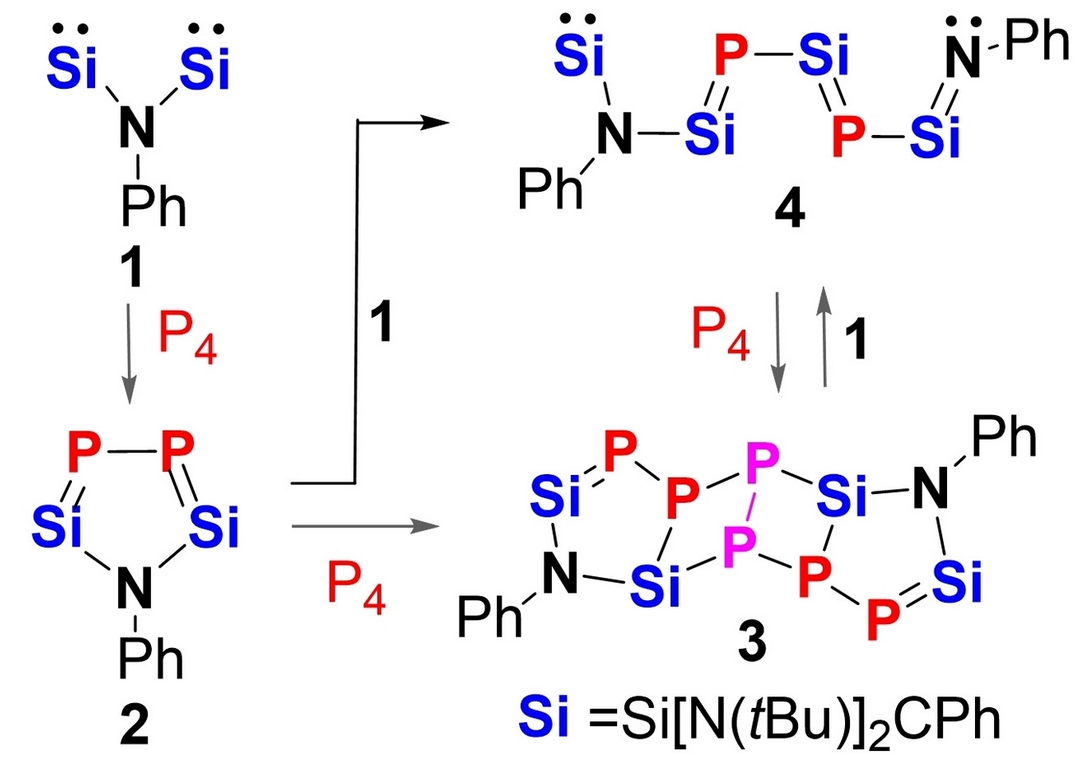An Isolable 2,5-Disila-3,4-Diphosphapyrrole and a Conjugated Si=P−Si=P−Si=N Chain Through Degradation of White Phosphorus with a N,N-Bis(Silylenyl)Aniline

White phosphorus (P4) undergoes degradation to P2 moieties if exposed to the new N,N-bis(silylenyl)aniline PhNSi2 1 (Si=Si[N(tBu)]2CPh), furnishing the first isolable 2,5-disila-3,4-diphosphapyrrole 2 and the two novel functionalized Si=P doubly bonded compounds 3 and 4. The pathways for the transformation of the non-aromatic 2,5-disila-3,4-diphosphapyrrole PhNSi2P2 2 into 3 and 4 could be uncovered. It became evident that 2 reacts readily with both reactants P4 and 1 to afford either the polycyclic Si=P-containing product [PhNSi2P2]2P2 3 or the unprecedented conjugated Si=P−Si=P−Si=NPh chain-containing compound 4, depending on the employed molar ratio of 1 and P4 as well as the reaction conditions. Compounds 3 and 4 can be converted into each other by reactions with 1 and P4, respectively. All new compounds 1–4 were unequivocally characterized including by single-crystal X-ray diffraction analysis. In addition, the electronic structures of 2–4 were established by Density Functional Theory (DFT) calculations.
